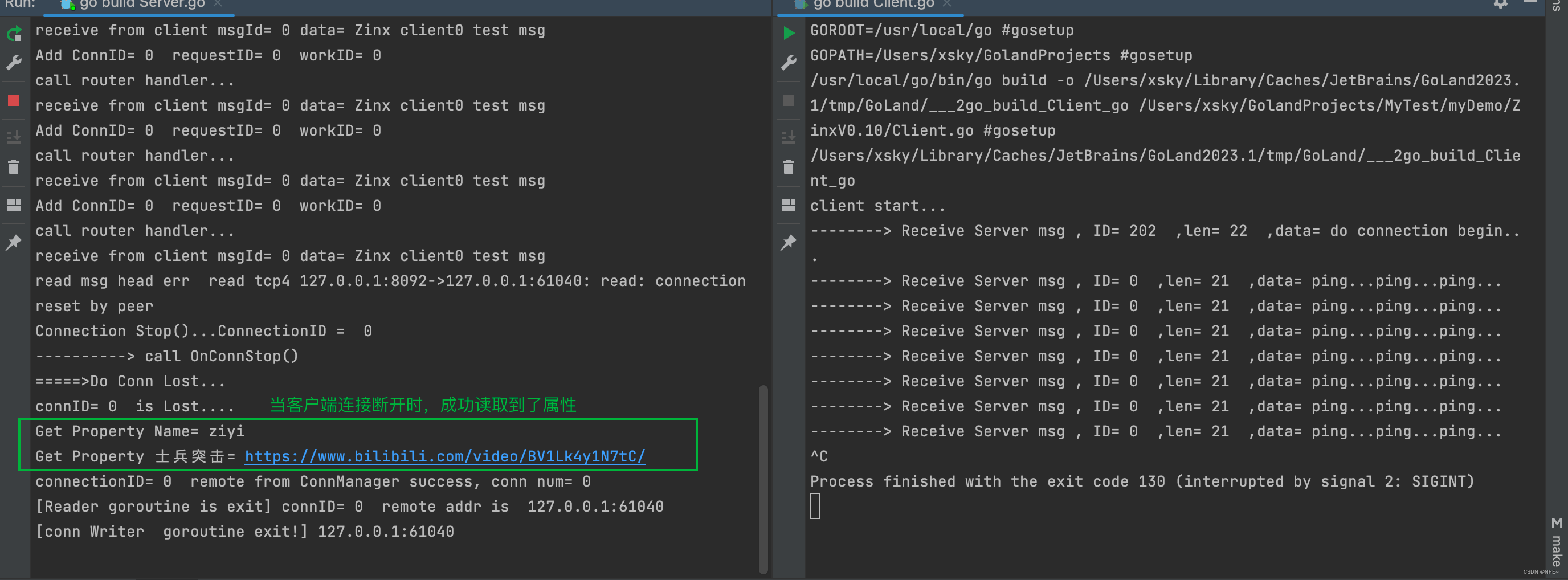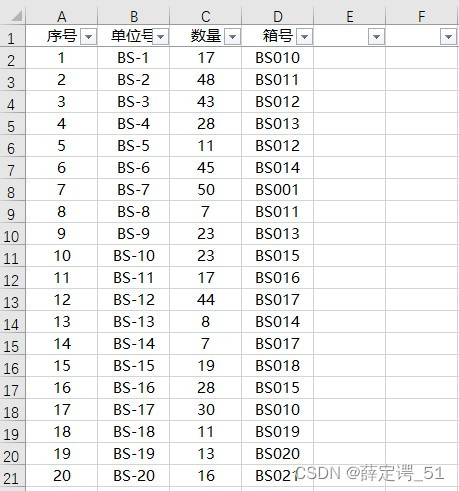
如图:对图中A-C列数据,根据C列数量按照一定的取值范围,组成一个分组装箱,要求如下:
1,每箱数量最好凑足50,否则为47-56之间;
2,图中每行数据不得拆分;
3,按顺序对分组装箱结果进行编号,如D列中BS0001;
4,生成分组装箱结果(包含B-C列数据),以及单独生成最终无法装箱的数据
目录
- 实现方法1
- 实现方法2
- 实现方法3
- 3种实现方法生成结果、对比、耗时
- 装箱结果整理
- 编号无序
- 编号有序
本问题本质上是组合求和问题,调用了combin_arr1函数,代码详见《Excel·VBA数组组合函数、组合求和》(如需使用代码需复制)
实现方法1
代码思路:持续不断组合
1,对数据读取为字典,行号为键数量为值;
2,对行号数组从2-N依次进行组合,判断是否符合取值范围;
3,对符合取值范围的行号组合,在res数组对应行号中写入装箱编号,并在字典中删除该行号
4,删除行号后,跳出后续循环遍历,并重复步骤2-3,直至无法删除行号,即没有符合范围的行号组合
5,在D列写入对应的装箱编号
注意:由于步骤4需要跳出循环,所以无法使用for…each遍历组合数组,否则报错该数组被固定或暂时锁定
Sub 装箱问题1()
Dim arr, dict As Object, i&, j&, temp_sum, res, w&, dc&, brr, r&, c&
target = 50: trr = Array(47, 56) '目标值,范围
Set dict = CreateObject("scripting.dictionary"): tm = Timer
With Worksheets("数据") '读取数据
arr = .[a1].CurrentRegion: ReDim res(1 To UBound(arr)): res(1) = "箱号"
For i = 2 To UBound(arr)
If arr(i, 3) = target Then
w = w + 1: res(i) = "BS" & Format(w, "000")
Else
dict(i) = arr(i, 3)
End If
Next
dc = dict.Count
Do '2层do方便有符合目标值时跳出,并继续组合
Do
For j = 2 To dc
brr = combin_arr1(dict.keys, j)
For r = 1 To UBound(brr)
temp_sum = 0
For c = 1 To UBound(brr(r))
temp_sum = temp_sum + dict(brr(r)(c))
Next
If temp_sum >= trr(0) And temp_sum <= trr(1) Then
w = w + 1
For c = 1 To UBound(brr(r))
res(brr(r)(c)) = "BS" & Format(w, "000"): dict.Remove brr(r)(c) '写入箱号,删除行号
Next
Exit Do
End If
Next
Next
If dc = dict.Count Then Exit Do '无组合符合目标值,跳出
Loop Until dc = 0
If dc = dict.Count Then Exit Do
dc = dict.Count
Loop Until dc = 0
.[d1].Resize(UBound(res), 1) = WorksheetFunction.Transpose(res)
End With
Debug.Print "组合完成,累计用时" & Format(Timer - tm, "0.00") '耗时
End Sub
实现方法2
代码思路:遍历组合,跳过重复行号
与实现方法2类似,但步骤4不同,在字典删除行号后,继续遍历组合,并判断每个组合中是否存在被删除的行号,如果存在则跳过本组合,直至无法删除行号,或剩余行号无法支持下一轮递增元素个数进行组合
Sub 装箱问题2()
Dim arr, dict As Object, i&, j&, temp_sum, res, w&, dc&, brr, r&, c&
target = 50: trr = Array(47, 56) '目标值,范围
Set dict = CreateObject("scripting.dictionary"): tm = Timer
With Worksheets("数据") '读取数据
arr = .[a1].CurrentRegion: ReDim res(1 To UBound(arr)): res(1) = "箱号"
For i = 2 To UBound(arr)
If arr(i, 3) = target Then
w = w + 1: res(i) = "BS" & Format(w, "000")
Else
dict(i) = arr(i, 3)
End If
Next
For j = 2 To dict.Count
If j > dict.Count Then Exit For '所剩元素不足,结束
brr = combin_arr1(dict.keys, j)
For Each b In brr
temp_sum = 0
For Each bb In b
If Not dict.Exists(bb) Then
temp_sum = 0: Exit For '重复跳过
Else
temp_sum = temp_sum + dict(bb)
End If
Next
If temp_sum >= trr(0) And temp_sum <= trr(1) Then
w = w + 1
For Each bb In b
res(bb) = "BS" & Format(w, "000"): dict.Remove bb '写入箱号,删除行号
Next
End If
Next
Next
.[d1].Resize(UBound(res), 1) = WorksheetFunction.Transpose(res)
End With
Debug.Print "组合完成,累计用时" & Format(Timer - tm, "0.00") '耗时
End Sub
实现方法3
实现方法1和实现方法2,都没有满足要求中“每箱数量最好凑足50”,仅对每行数量优先判断是否等于50,对于后续组合中都是符合范围即可
因此,对实现方法2添加1个for循环,第1遍组合满足target,第2遍组合满足目标值trr范围
Sub 装箱问题3()
Dim arr, dict As Object, i&, j&, temp_sum, res, w&, dc&, brr, r&, c&
target = 50: trr = Array(47, 56) '目标值,范围
Set dict = CreateObject("scripting.dictionary"): tm = Timer
With Worksheets("数据") '读取数据
arr = .[a1].CurrentRegion: ReDim res(1 To UBound(arr)): res(1) = "箱号"
For i = 2 To UBound(arr)
If arr(i, 3) = target Then
w = w + 1: res(i) = "BS" & Format(w, "000")
Else
dict(i) = arr(i, 3)
End If
Next
For n = 1 To 2 '第1遍组合满足target,第2遍组合满足目标值trr范围
For j = 2 To dict.Count
If j > dict.Count Then Exit For '所剩元素不足,结束
brr = combin_arr1(dict.keys, j)
For Each b In brr
temp_sum = 0
For Each bb In b
If Not dict.Exists(bb) Then
temp_sum = 0: Exit For '重复跳过
Else
temp_sum = temp_sum + dict(bb)
End If
Next
If n = 1 And temp_sum = target Then
w = w + 1
For Each bb In b
res(bb) = "BS" & Format(w, "000"): dict.Remove bb '写入箱号,删除行号
Next
ElseIf n = 2 And temp_sum >= trr(0) And temp_sum <= trr(1) Then
w = w + 1
For Each bb In b
res(bb) = "BS" & Format(w, "000"): dict.Remove bb '写入箱号,删除行号
Next
End If
Next
Next
Next
.[d1].Resize(UBound(res), 1) = WorksheetFunction.Transpose(res)
End With
Debug.Print "组合完成,累计用时" & Format(Timer - tm, "0.00") '耗时
End Sub
3种实现方法生成结果、对比、耗时
图中C列中的数量为1-50范围内的随机数,D列即为结果
分别对3种方法生成结果进行统计、对比:
方法1、2生成结果完全相同,数量分布不集中;方法3最终装箱的箱数也更少,且数量集中在50,但剩余行数多
400行数据测试,方法1、2剩余4行,方法3剩余15行

3种方法代码运行速度,分别测试300行、400行数据的耗时秒数
方法3对比方法2需要多生成、遍历一遍组合,由于组合数成指数递增,因此其400行相比300行耗时大幅增加,且电脑内存最高占用6G。如果要使用方法3且数据量较大,最好还是分段运行代码,避免耗时过久

装箱结果整理
编号无序
字典以箱号为键,值为数组
Sub 装箱结果输出1无序()
Dim arr, dict As Object, i&, j&, r&, c&, max_c&, rng As Range, xh, dw, sl
Set dict = CreateObject("scripting.dictionary"): tm = Timer
With Worksheets("数据") '读取数据
arr = .[a1].CurrentRegion: ReDim res(1 To UBound(arr) * 2, 1 To 10)
res(1, 1) = "箱号": r = 0: Set rng = .Cells(1, 1).Resize(1, 3) '表头
For i = 2 To UBound(arr)
If Len(arr(i, 4)) Then
xh = arr(i, 4): dw = arr(i, 2): sl = arr(i, 3)
If Not dict.Exists(xh) Then
r = r + 2: dict(xh) = Array(r, 2, sl) '箱号对应的行列号,数量合计
res(dict(xh)(0), 1) = xh '箱号、单位号、数量赋值
res(dict(xh)(0), dict(xh)(1)) = dw
res(dict(xh)(0) + 1, dict(xh)(1)) = sl
Else
c = dict(xh)(1) + 1: hj = dict(xh)(2) + sl '数量合计
dict(xh) = Array(dict(xh)(0), c, hj)
res(dict(xh)(0), dict(xh)(1)) = dw '单位号、数量赋值
res(dict(xh)(0) + 1, dict(xh)(1)) = sl
max_c = WorksheetFunction.Max(max_c, c) '最大列数
End If
Else
Set rng = Union(rng, .Cells(i, 1).Resize(1, 3))
End If
Next
End With
With Worksheets("结果") '写入结果
r = r + 1: max_c = max_c + 1: res(1, max_c) = "总件数"
For i = 2 To r
If Len(res(i, 1)) = 0 Then
res(i, 1) = "数量": res(i, max_c) = dict(res(i - 1, 1))(2)
End If
Next
For j = 2 To max_c - 1
res(1, j) = "单位号" & (j - 1)
Next
.[a1].Resize(r, max_c) = res
If Not rng Is Nothing Then rng.Copy .Cells(1, max_c + 2) '无法装箱
End With
Debug.Print "累计用时" & Format(Timer - tm, "0.00") '耗时
End Sub
生成结果:对方法2生成数据(即本文图1)进行整理
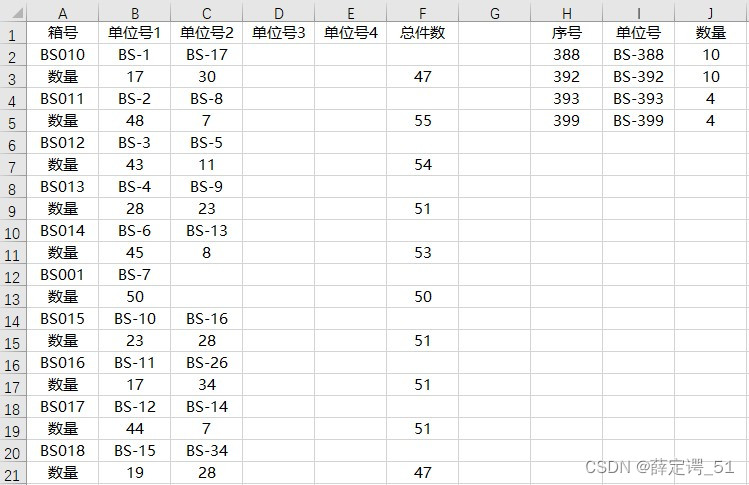
编号有序
字典嵌套字典,代码速度较无序版稍慢
为保证编号有序,以下代码使用了一维数组排序,调用了bubble_sort函数,代码详见《Excel·VBA数组冒泡排序函数》(如需使用代码需复制)
Sub 装箱结果输出2有序()
Dim arr, dict As Object, i&, j&, r&, c&, max_c&, rng As Range, xh, dw, sl
Set dict = CreateObject("scripting.dictionary"): tm = Timer
With Worksheets("数据") '读取数据
arr = .[a1].CurrentRegion: ReDim res(1 To UBound(arr) * 2, 1 To 10)
res(1, 1) = "箱号": r = 0: Set rng = .Cells(1, 1).Resize(1, 3) '表头
For i = 2 To UBound(arr)
If Len(arr(i, 4)) Then
xh = arr(i, 4): dw = arr(i, 2): sl = arr(i, 3)
If Not dict.Exists(xh) Then
Set dict(xh) = CreateObject("scripting.dictionary")
End If
dict(xh)(dw) = dict(xh)(dw) + sl
Else
Set rng = Union(rng, .Cells(i, 1).Resize(1, 3))
End If
Next
krr = bubble_sort(dict.keys) '有序箱号
For Each k In krr
r = r + 2: c = 1: res(r, c) = k
For Each kk In dict(k).keys
c = c + 1: res(r, c) = kk: res(r + 1, c) = dict(k)(kk)
Next
max_c = WorksheetFunction.Max(max_c, c) '最大列数
Next
End With
With Worksheets("结果") '写入结果
r = r + 1: max_c = max_c + 1: res(1, max_c) = "总件数"
For i = 2 To r
If Len(res(i, 1)) = 0 Then
res(i, 1) = "数量"
res(i, max_c) = WorksheetFunction.sum(dict(res(i - 1, 1)).items)
End If
Next
For j = 2 To max_c - 1
res(1, j) = "单位号" & (j - 1)
Next
.[a1].Resize(r, max_c) = res
If Not rng Is Nothing Then rng.Copy .Cells(1, max_c + 2) '无法装箱
End With
Debug.Print "累计用时" & Format(Timer - tm, "0.00") '耗时
End Sub
生成结果:对方法2生成数据(即本文图1)进行整理
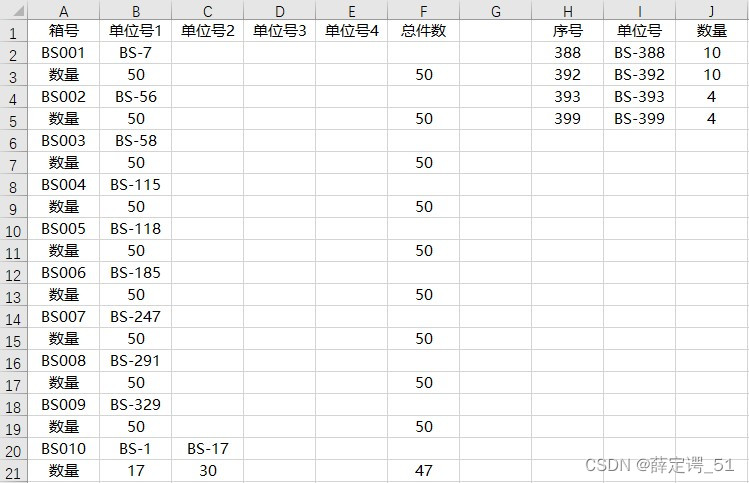
附件:《Excel·VBA定量装箱、凑数值金额、组合求和问题(附件)》
扩展阅读:《excelhome-一个装箱难题》
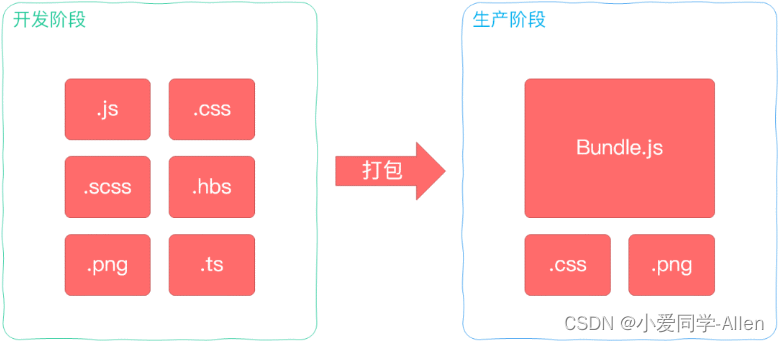
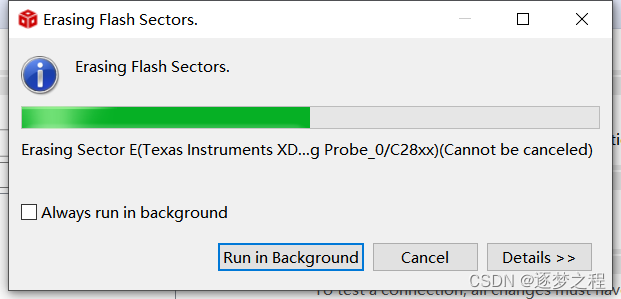
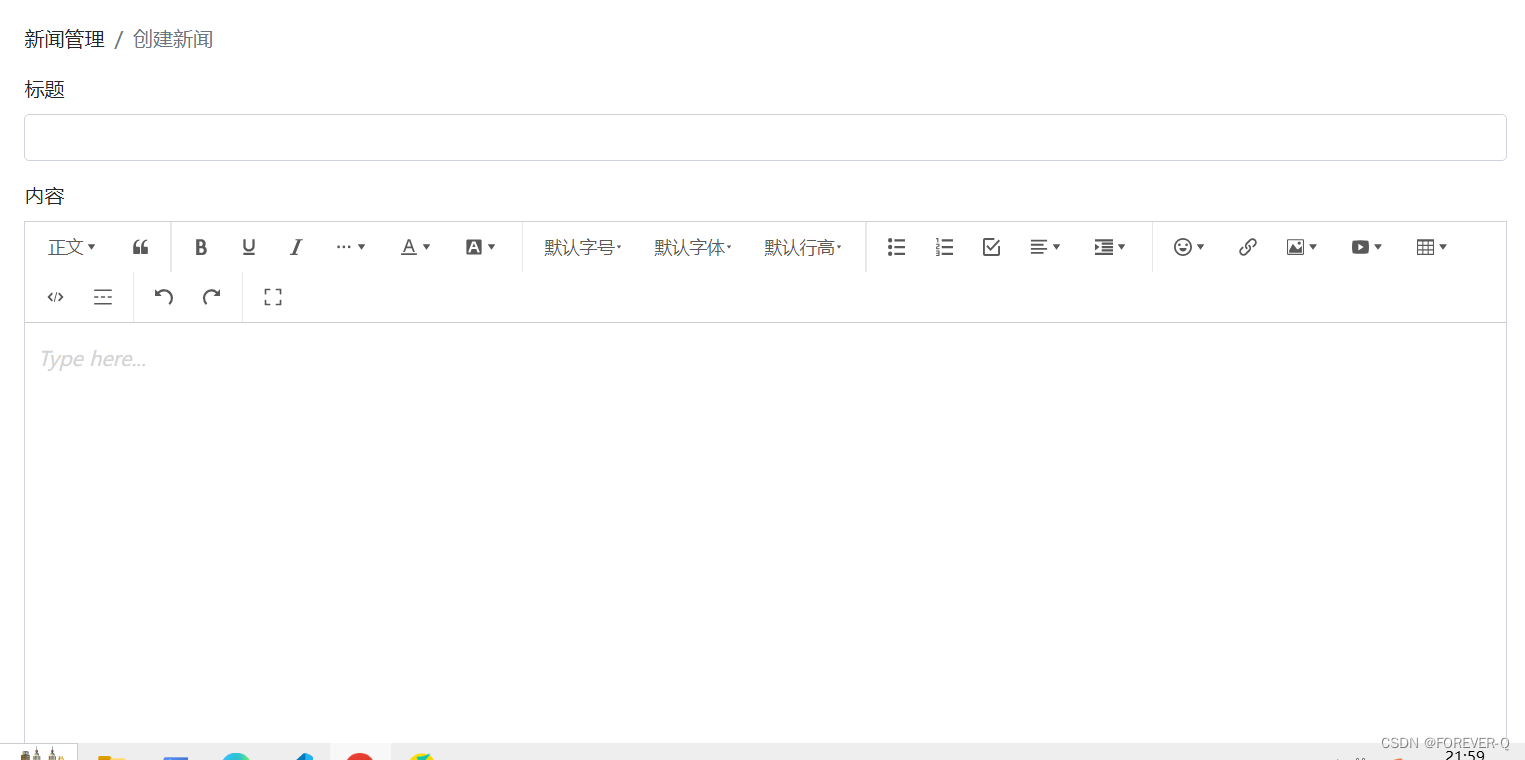


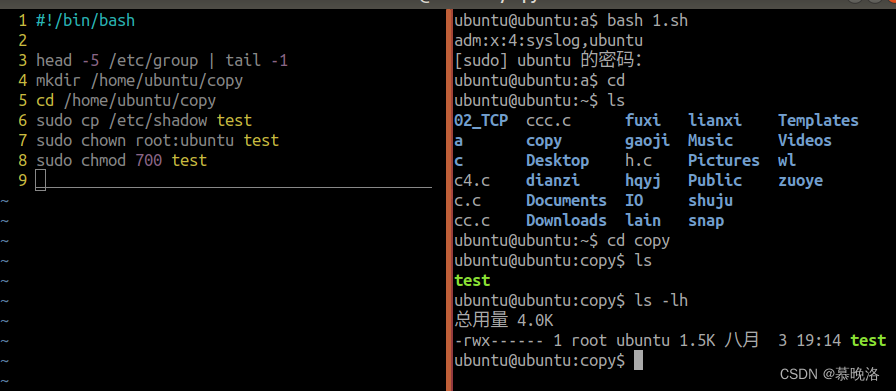


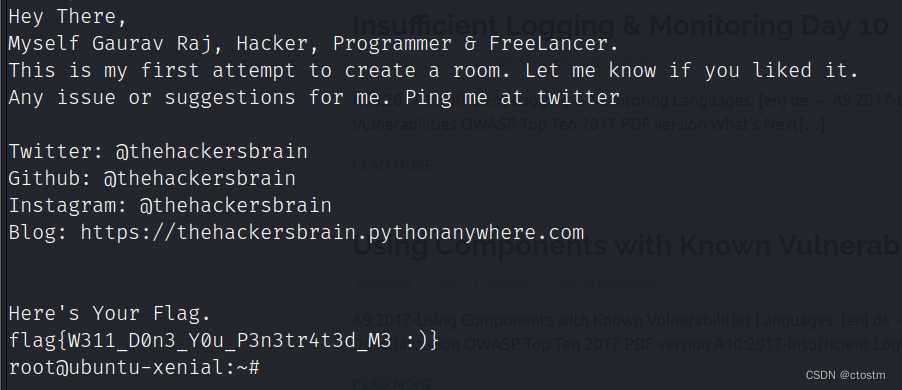



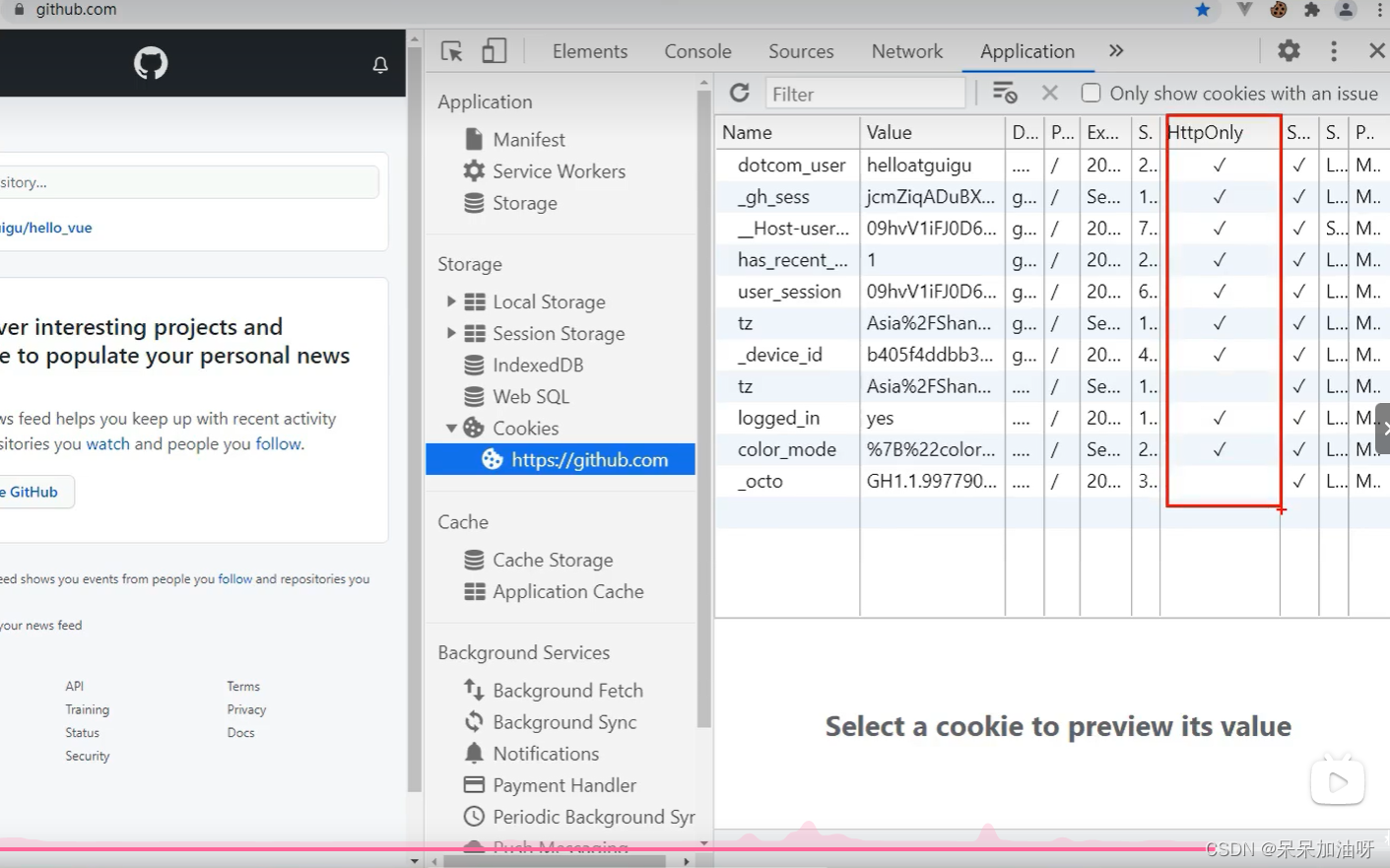
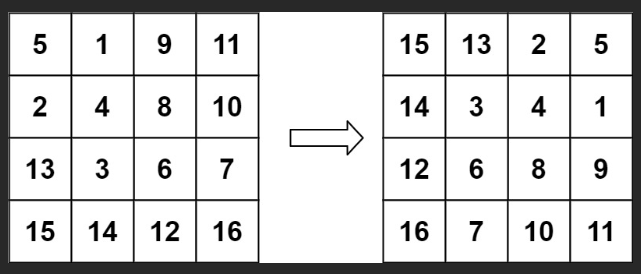
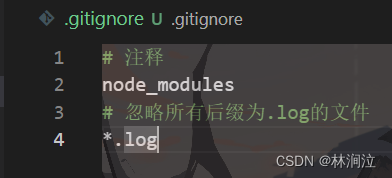
![[C++项目] Boost文档 站内搜索引擎(2): 文档文本解析模块parser的实现、如何对文档文件去标签、如何获取文档标题...](https://img-blog.csdnimg.cn/img_convert/24454c95a8284b7e03e5d601bd55286e.gif)


